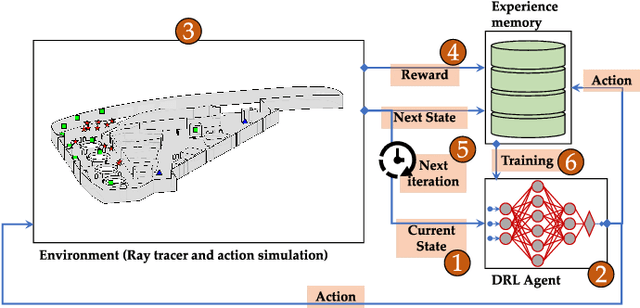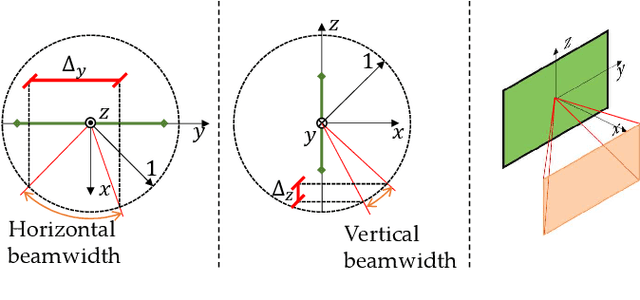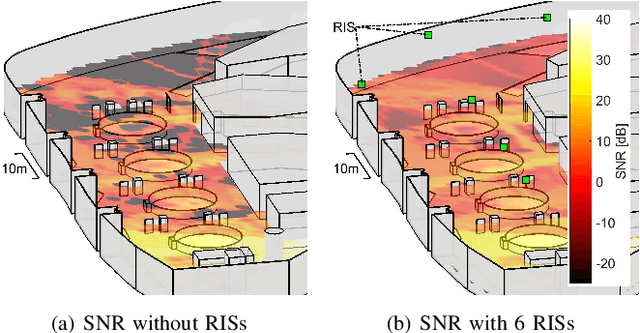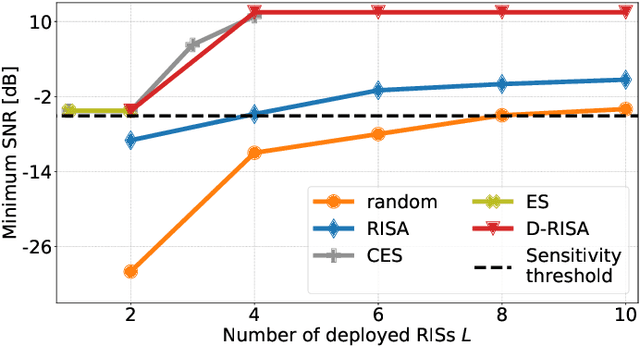Guillermo Encinas-Lago
RiLoCo: An ISAC-oriented AI Solution to Build RIS-empowered Networks
Mar 07, 2025Abstract:The advance towards 6G networks comes with the promise of unprecedented performance in sensing and communication capabilities. The feat of achieving those, while satisfying the ever-growing demands placed on wireless networks, promises revolutionary advancements in sensing and communication technologies. As 6G aims to cater to the growing demands of wireless network users, the implementation of intelligent and efficient solutions becomes essential. In particular, reconfigurable intelligent surfaces (RISs), also known as Smart Surfaces, are envisioned as a transformative technology for future 6G networks. The performance of RISs when used to augment existing devices is nevertheless largely affected by their precise location. Suboptimal deployments are also costly to correct, negating their low-cost benefits. This paper investigates the topic of optimal RISs diffusion, taking into account the improvement they provide both for the sensing and communication capabilities of the infrastructure while working with other antennas and sensors. We develop a combined metric that takes into account the properties and location of the individual devices to compute the performance of the entire infrastructure. We then use it as a foundation to build a reinforcement learning architecture that solves the RIS deployment problem. Since our metric measures the surface where given localization thresholds are achieved and the communication coverage of the area of interest, the novel framework we provide is able to seamlessly balance sensing and communication, showing its performance gain against reference solutions, where it achieves simultaneously almost the reference performance for communication and the reference performance for localization.
Unlocking Metasurface Practicality for B5G Networks: AI-assisted RIS Planning
Oct 16, 2023



Abstract:The advent of reconfigurable intelligent surfaces(RISs) brings along significant improvements for wireless technology on the verge of beyond-fifth-generation networks (B5G).The proven flexibility in influencing the propagation environment opens up the possibility of programmatically altering the wireless channel to the advantage of network designers, enabling the exploitation of higher-frequency bands for superior throughput overcoming the challenging electromagnetic (EM) propagation properties at these frequency bands. However, RISs are not magic bullets. Their employment comes with significant complexity, requiring ad-hoc deployments and management operations to come to fruition. In this paper, we tackle the open problem of bringing RISs to the field, focusing on areas with little or no coverage. In fact, we present a first-of-its-kind deep reinforcement learning (DRL) solution, dubbed as D-RISA, which trains a DRL agent and, in turn, obtain san optimal RIS deployment. We validate our framework in the indoor scenario of the Rennes railway station in France, assessing the performance of our algorithm against state-of-the-art (SOA) approaches. Our benchmarks showcase better coverage, i.e., 10-dB increase in minimum signal-to-noise ratio (SNR), at lower computational time (up to -25 percent) while improving scalability towards denser network deployments.
 Add to Chrome
Add to Chrome Add to Firefox
Add to Firefox Add to Edge
Add to Edge